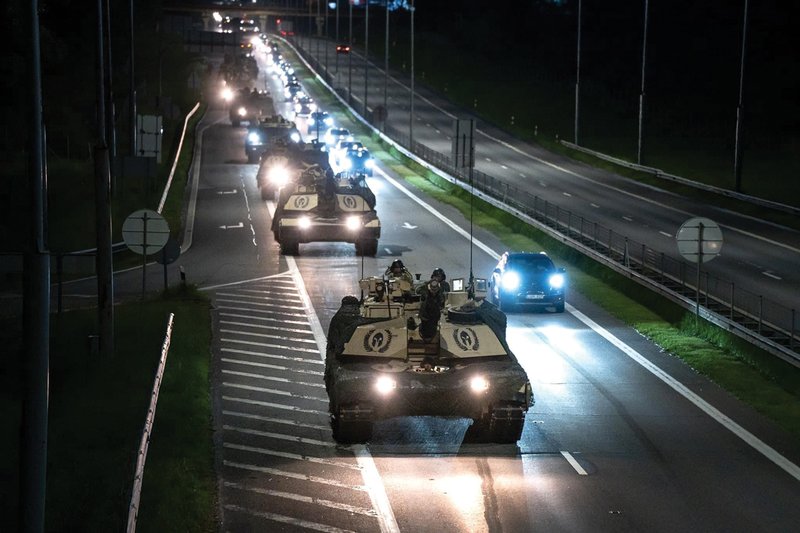Reality check – how the US Army is learning training lessons from current conflicts
A recent briefing by the USMC set out what the service sees as its core training needs and how it hopes to deliver on them, as well as revealing several new requirements and initiatives.
Marine Corps Systems Command’s Program Manager for Training Systems (PM TRASYS) utilised this month’s Training & Simulation Industry Symposium event to provide a glimpse into current programme activities and anticipated near-term needs... Continues below
Newsletter Sponsors:

Above: US Army brigade combat teams deployed in Eastern Europe need to be ready for the presence of civilian populations in their area of operation and train accordingly. (Photo: US Army)
‘A key characteristic of the Russia-Ukraine conflict is the constant and coordinated threat from unmanned aircraft systems, indirect fire and electronic warfare. Within the Russia-Ukraine conflict, UAS regularly fill the skies with UAVs from which it is difficult to hide,’ it states.
This proliferation and threat level provide a warning about the vulnerability of the US Army’s legacy command post. For such a post to survive large-scale combat operations, planners must consider new TTPs for its design, placement and camouflage.
The document does not contain descriptions of classified methods that can make command posts completely ‘invisible’ or survivable to the enemy because such methods do not exist, but it does provide important basic rules and guidelines for survivability.

MVRsimulation’s VRSG: bringing military simulation training to life.
Ukraine divides its own guidance into three key areas – establishing reliable communications, avoiding detection and mitigating the threat from indirect fire – so the publication goes on to suggest location, camouflage, deception operations, communications and other considerations.
‘CALL will continue its focus on modern warfare observations from the Russia-Ukraine conflict,’ it concludes.
CALL aims to conduct regular visits and virtual meetings with Security Assistance Group – Ukraine, Joint Multinational Training Group – Ukraine, US Army Europe and Africa (USAREUR-AF), the Polish Military Lessons Learned Centre, and Ukraine’s own forces.
Another recent publication from CALL, entitled Win in Europe, advises brigade commanders to produce guidance and intent early, but it also targets key staff members to prepare and manage time during execution.
Prepared at the Joint Multinational Training Center (JMRC) in Germany it asserts that JMRC ‘is uniquely postured to discuss the challenges of the operational environment of large-scale combat operations in Europe. European terrain, enemy and multinational operations demand that brigades retain flexibility during execution to react to emergent threats and seize opportunities.’

A description of the ‘civil’ implications within that environment states they are ‘uniquely challenging due to the size, anticipated behaviour and technological sophistication of the civilian population in potential conflict areas.
In the heavily Russian-speaking counties of eastern Latvia and Estonia, as well as Polish and Lithuanian districts along the Suwalki Gap, there is an average of nine towns or villages in a brigade combat team’s doctrinal 135 km2 area of operations.
Populations here can range from eight to 80,000 residents, imposing significant coordination requirements and potential tactical impacts on unit leaders. Military forces cannot assume that civilians will simply vacate their homes when a conflict occurs, conveniently creating a free fire zone.
Indeed, evidence from Ukraine suggests that up to 25% of urban populations will remain, even after months of fighting. ‘Tactical units deployed to Europe should expect to confront large civilian populations and must train accordingly,’ the report advises.
Other articles in this newsletter:
A complex enterprise – shaping the future of US Marine Corps training
Combat casualty care training – special forces need special approach
Don't want to miss out on future Decisive Edge content? Make sure you are signed up to our email newsletters.












